Hydraulic Bump Stop Guide
Hydraulic bump stops, or air-bumps as they are sometimes called, are a critical component of any performance suspension system. Not only do they help protect the vehicle and suspension components from hard bottom-outs, they play a critical role in end-stroke damping.
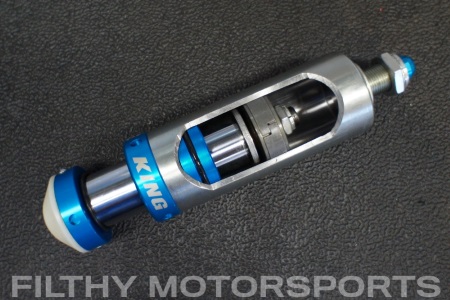
As you can see from the above cut-away, hydraulic bump stops are far more than a simple air-cylinder, they have a full piston with compression and rebound shims just like a performance shock absorber.

How Does a Hydraulic Bump Stop Work?
Hydraulic bump stops are filled with shock oil and nitrogen pressure. During the first stage of the bump stop stroke, the shaft and piston compress the nitrogen pressure which acts like a spring with an exponentially increasing spring rate. This allows the first 1/3 of the stroke to be relatively soft with the middle 1/3 being significantly stiffer. The last 1/3 of the stroke (depending on oil level) is the second stage where the shock piston is forced through the shock oil and that is where the majority of the energy is absorbed. Of course, once compressed, that energy wants to be released so rebound valving is used to help prevent hard unloading of the bump stop.
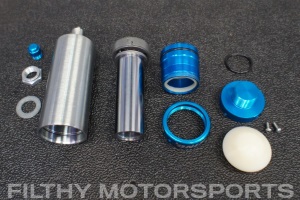
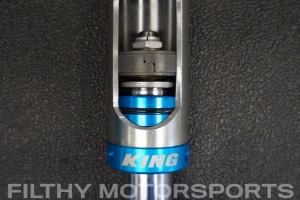
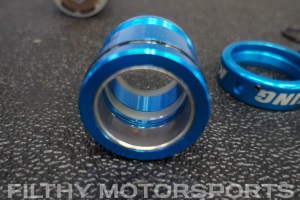
While some customers are deterred by the cost of hydraulic bump stops, especially when compared to cheap rubber bumps, you definitely do get what you pay for. King Hydraulic Bump Stops are priced a bit higher than most other brands but making a bump stop that withstands high forces repeatedly for the duration of a long desert race requires high quality materials machined to very tight tolerances.
Bump Stop Brands and Styles
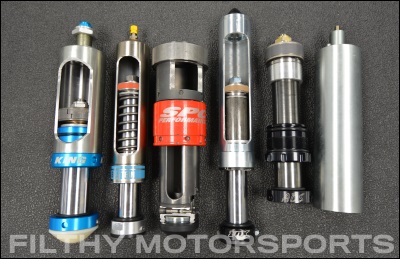
Just about every performance off-road shock manufacturer makes their own hydraulic bump stop and, just like with their shocks, they all do things slightly different to try and set themselves apart.
King and ADS both build their bump stops like they build their shocks with full size pistons, compression and rebound shims, and high pressure seals. While we used their larger 2.5 size bumps stops for our displays, when compared in matching sizes to other brands, their components are still significantly beefier. Both King and ADS bump stops are top mounted and fit using precision machined mounting sleeves instead of traditional pinch-style cans.
Fox hydraulic bumps stops are extremely popular due to their affordability and while their components are smaller and designed for mass manufacturing like their shocks, we've had very good luck with them over the years and would highly recommend them to customers on a budget.
Bilstein bump stops are practically identical to those made by Fox other than a rebound spring put in place of the shaft spacer. The spring is designed to help dampen the unloading forces of the bump stop and prevent that annoying clicking sound cause by the bump stop fully extending.
SPC Performance (Light Racing) calls their hydraulic bump stop a Jounce Shock due to its unique design. Unlike a traditional piston style bump stop, the Jounce Shock dampens both compression and rebound movement by forcing oil though externally adjustable needle valves instead of valving shims. This design makes the Jounce shock extremely compact, allowing it to fit in spaces that a traditional bump stop could not. One downfall to the Jounce Shock is that the way that it is made makes it extremely difficult to open and service without damaging it.
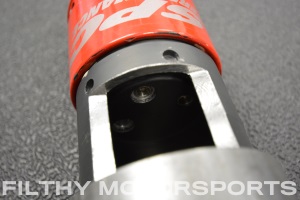
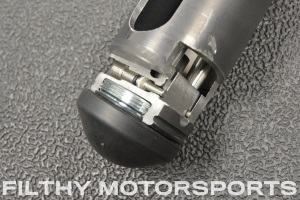
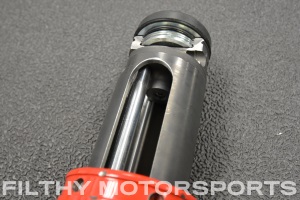
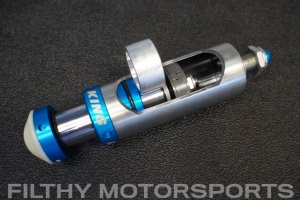
What Size Bump Stop Do I Need?
Hydraulic bump stops are typically available in 2.0" and 2.5" body sizes with 2", 3", and 4" stroke lengths which can also be shortened with the use of internal spacers. Just like when measuring for performance shocks, the cylinder diameter is decided by the weight of the vehicle and how it is used and the stroke length is determined by your suspension travel and where your bump stops will be mounted.
2.0 Bump Stops work best for solid axle vehicles 5,000 lbs. or under used for rock crawling, trail running, and mild desert runs. For vehicles with low (4-5" up travel) ride heights, we recommend 3" stroke bump stops if you can fit them or 2" stroke bumps if you are tight for space. For vehicles with ride heights above 6-7", we suggest full 4" bump stops.
2.5 Bump Stops can absorb significantly more energy than the 2.0 size so they are better suited for solid axle vehicles over 5,000 lbs. or in highly leveraged a-arm/trailing arm applications. Mud trucks and desert racers with large amounts of suspension travel should run 4" travel bump stops, while vehicles with a-arms or low ride heights should use 2" or 3" travel bump stops.
Shorter bump stops require higher internal pressures than longer bump stops which results in a harder impact. Therefore, you always want to fit the longest bump stops you can that don't interfere with your up travel or cause you to be riding on them at ride height.
King hydraulic bump stop dimension courtesy of Filthy Motorsports:
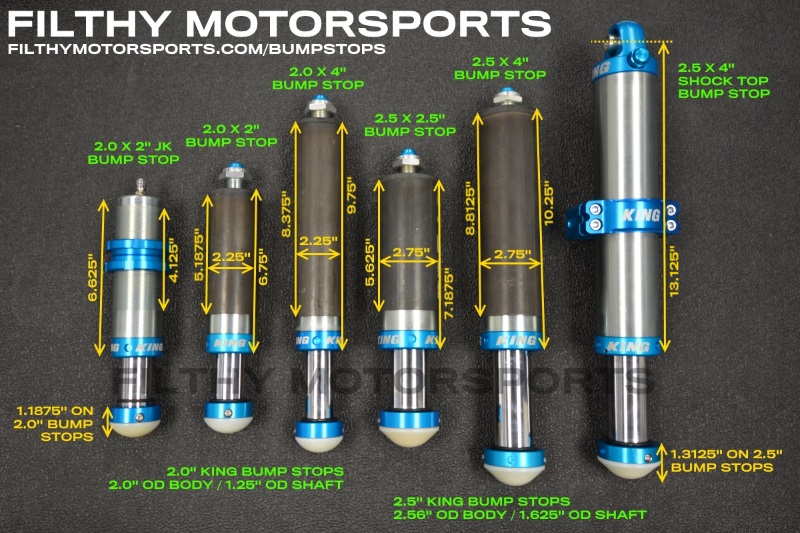
Tuning Hydraulic Bump Stops
Bump stops are tuned by adjusting their internal nitrogen pressure using a nitrogen fill kit which includes a pressure regulator, connection hose, and an air chuck. Getting them set up correctly is a trial and error process and we find it works best to start with a pressure that is too high (350-400 psi) and slowly work your way down. With the bump stop pressurized, roll the o-ring on the shaft all the way up before going out for your first test run. You will notice that as your bump stops cycle, they will push the o-rings down to show you how much they have moved. Ultimately, when you are driving 95% all out, you want the bump stops to cycle almost all the way leaving about 1/4" left as insurance for those times when you hit something harder than you had expected.
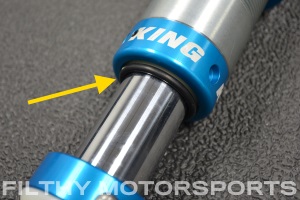
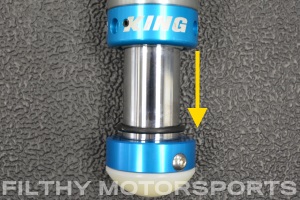
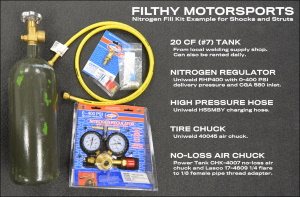
Assemble a nitrogen fill kit with these parts from Amazon.
Put together your own Nitrogen Fill Kit with a pressure regulator, connection hose, and an air chuck or no-loss air chuck. The only other item needed is a nitrogen tank that is available at any local welding supply shop.


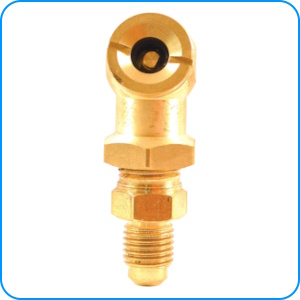
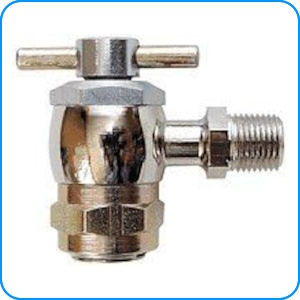
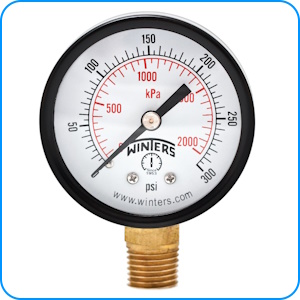
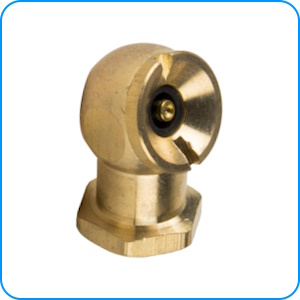
As an Amazon Associate, we earn a small commission on purchases which does not affect your pricing.
This bump stop guide is ©Copyright Crawlpedia.com - Please provide a link back to this page when copying.
Data is accurate to the best of our knowledge and is offered as-is with no guarantee.

More Shock Guides:
Shock Rebuild Instructions - Detailed step-by-step instructions for rebuilding high-performance shocks.
Shock Rebuilding Tools - A list of tools needed to service high-performance shocks and coilovers.
Shock Valving Guide - A guide to high-performance shock valving and valving shim configurations.
Shock Tuning Guide - A guide to how high-performance shocks are tuned and valved to work well.
Shock Valving Shim Stack Examples - A list of common, basic valving shim stack configurations for high-performance shocks.
Coilover Spring Rate Calculator - A calculator to help you determine a good starting point for coilover spring rates.
4-Link Suspension Guide - A quick overview of the most important elements of 4-link geometry.
Shock Rebuild Parts - A link to Filthy Motorsports' shock parts page.
How To Measure For Coilovers - Order the right size shocks and coilovers by following these detailed instructions.
Coilover Install and Setup Guide - Proper coilover installation, setup, and fine tuning instructions.
Coilover Spring Re-Calculation Guide - How to easily correct coilover spring rates to achieve your desired ride height.
ORI STX Struts Guide - An introduction to ORI STX Struts, how they work and how to tune them.
Filthy Motorsports
High performance off-road racing parts and professional shock tuning. Learn more at
FilthyMotorsports.com
Shock Service, LLC
Professional shock tuning and rebuilding services for King and ADS shocks. Learn more at
ShockService.com
Polar Cryogenics
Cryogenic treatment improves strength and longevity of gears, axle, and brakes. Learn more at
PolarCryogenics.com
Crown Race Gears
Race-spec ring and pinion gears for desert racing, rock bouncing, and rock crawling. Learn more at
RaceGears.com





















